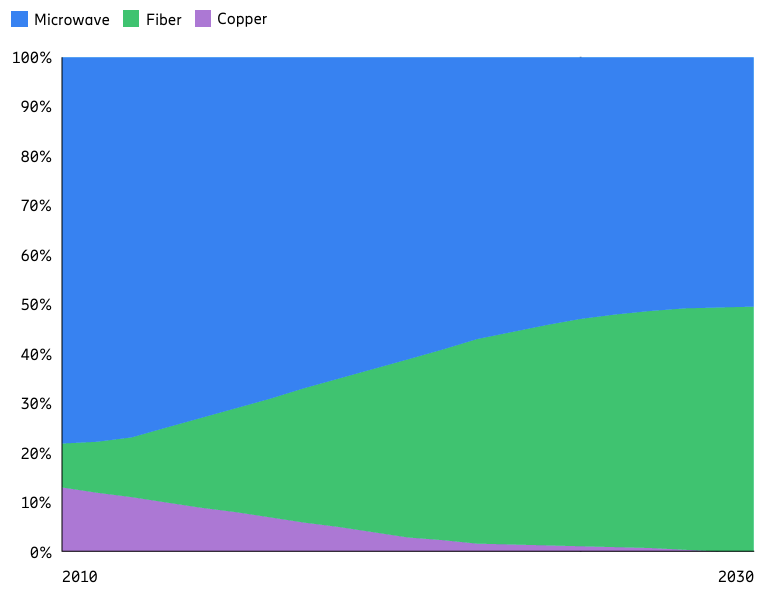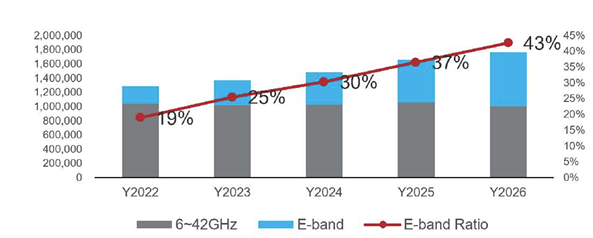I read many papers during this year about the capabilities of microwave as a backhaul technology of 5G.
I see also some claims that fiber is a mandatory technology for #5G backhauling due to the huge amount of data growth with the wider bandwidth in the spectrum in Sub-6GHz and mmWave which can exceed the 1Gpbs per site. Besides that using massive MIMO and beamforming adds more capacity.
In this article, I will answer some questions related to the relation between 5G and Microwave.
Can Microwave overcome the increase of 5G data rate?
Absolutely yes but! we need to add more details to the BUT 🙂 Let’s see the main reasons why Microwave will contribute 50% of the market as a backhaul till 2030 as per Ericsson.

- Advances in technology including higher modulation schemes, broader channel bandwidth, and the introduction of new spectrum, such as Eband, are examples of new developments introduced to keep pace with evolution in the RAN domain.
- The current microwave spectrum ranges from 6 GHz to 86 GHz, of which 6-42 GHz are traditional bands, and 71-86 GHz are known as E-Bands which now is used by more than 90 countries to reduce the TCO and faster time to the market in 5G industry.

Traditional Band Vs. E-Band Market Forecast, Huawei - E-Band’s high bandwidth and low spectrum cost make it the leading choice for 5G Backhaul in urban and suburban. It can enables 10Gpbs bachaul per carrier.
- High Antenna Gain can overcome the short transmission distance, we can use a 0.9m antenna instead of 0.3m or 0.6m, For example, sway compensation enables the use of 0.9 m antenna sizes, that provide 80 percent longer hops than regular 0.3 m antennas.
- Microwaves provided an opportunity for new private service providers to build their networks and compete with the established incumbent wireline organizations, Unlike fiber which is in some countries (Like Egypt) owned by government-owned companies.
- Microwave including E-Band will be the right option for some regions like suburban and rural with a low fiber penetration rate.
- Future bands, The industry is currently discussing the usage of W-band and D-band for microwave.

What are the microwave challenges 5G can face in the future?
- Higher capacity will need more spectrum.
- E-band transmission distance is not enough and needs some techniques to be improved like Band aggregation.
- Increasing the electricity and spectrum fees leads to high OPEX.
How can we compute the needed Backhaul capacity?
There are many ways to compute the needed backhaul capacity as below, If we have a site with 3 sectors:
- Backhaul = Sum of average capacity values of the 3 sectors.
- Backhaul = The peak value of one sector.
- Backhaul = Peask of a single sector + average value of 2 sectors.
According to Huawei, 70% of operators worldwide use the first two ways in 4G calculation.
Let’s take one example for a 5G site with TDD spectrum 100MHz, so the backhaul for this 5G site as per the above methods will be as below:
- Backhaul 3.3 Gbps.
- Backhaul = 2.1 Gbps.
- Backhaul 4.7 Gbps.
Based on the above calculations, Microwave can handle all 5G site traffic.
The Next question now is, Can Microwave be a good candidate for Open RAN fronhaul? Stay tuned, I will address this question in the next article 🙂
